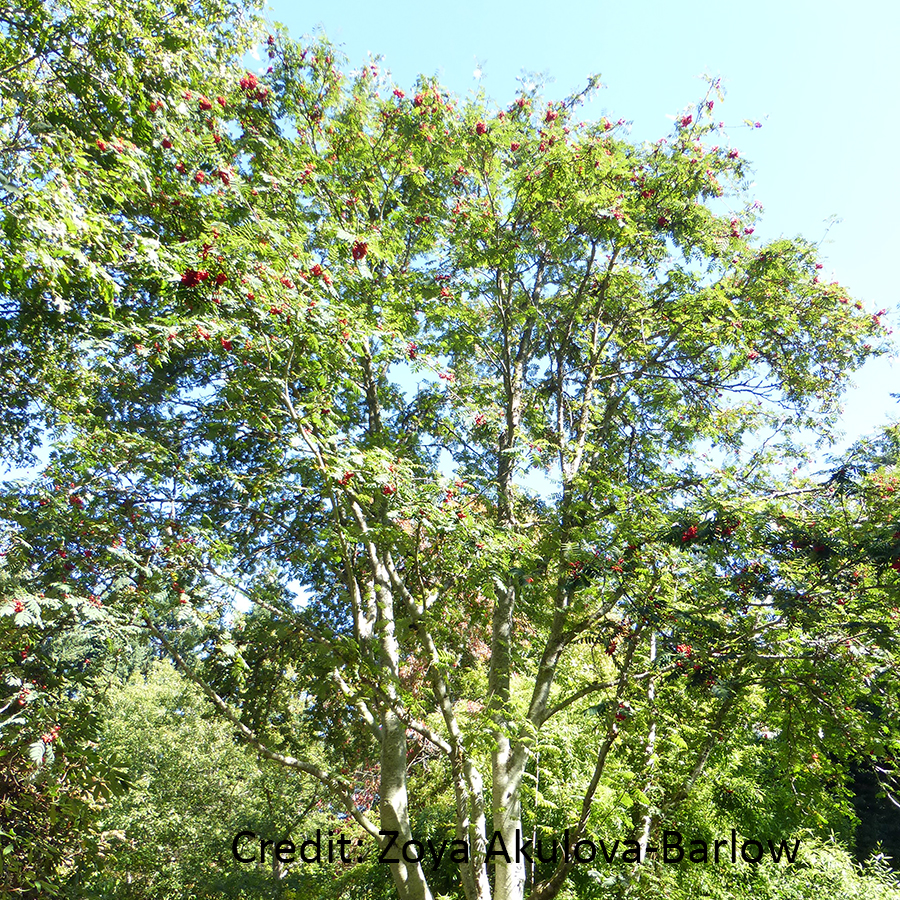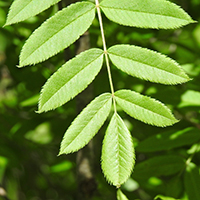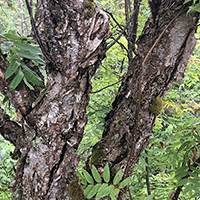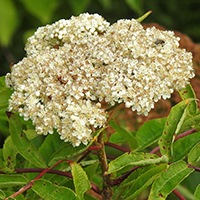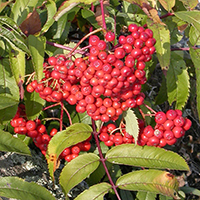What American mountain-ash looks like
Size and shape
- Medium-sized tree up to 10 metres tall.
Leaves
- Dark green or yellow leaves with pale undersides.
- Have 13 to 17 toothed leaflets (5 to 10 centimetres).
Bark
- Smooth, light grayish brown bark when young.
- Becomes rough with age.
Flowers
- White flowers grow in dense umbrella-shaped clusters with broad petals at the tip (3 to 4 millimetres).
- Bloom in May and June.
Fruits
- Bunches of bright orange-red berries (4 to 6 millimetres) that mature in August.
Where American mountain-ash is found
American mountain-ash is found across the boreal forest region of Ontario, south to the northern-most portions of Southern Ontario.
What you need to know to grow American mountain-ash
- Moisture: grows best in moist soil but tolerates dry conditions.
- Shade: grows best in full sun or partial shade.
- Soil: grows in a variety of soils.
- Caution: American mountain ash can grow in rocky and dry soil, but growth will be stunted.
Benefits and uses of American mountain-ash
Wildlife benefits
American mountain-ash fruit are a food source for many birds and mammals, including:
- songbirds including catbirds, thrushes, waxwings and robins
- moose
Pollinators such as birds and bees are attracted to the flowers.
Commercial uses
American mountain-ash is rarely used as an ornamental tree because it is less tolerant in urban settings than European mountain ash (also known as rowan).
Fun facts about American mountain-ash
- American mountain-ash seeds are dispersed in bird droppings.
- Pioneer doctors would use the bark as an anti-malarial medicine because it closely resembled quinine trees.
- American mountain-ash trees grow well at high altitudes, which is where the species gets its name.
Updated: January 10, 2024
Published: July 18, 2014
